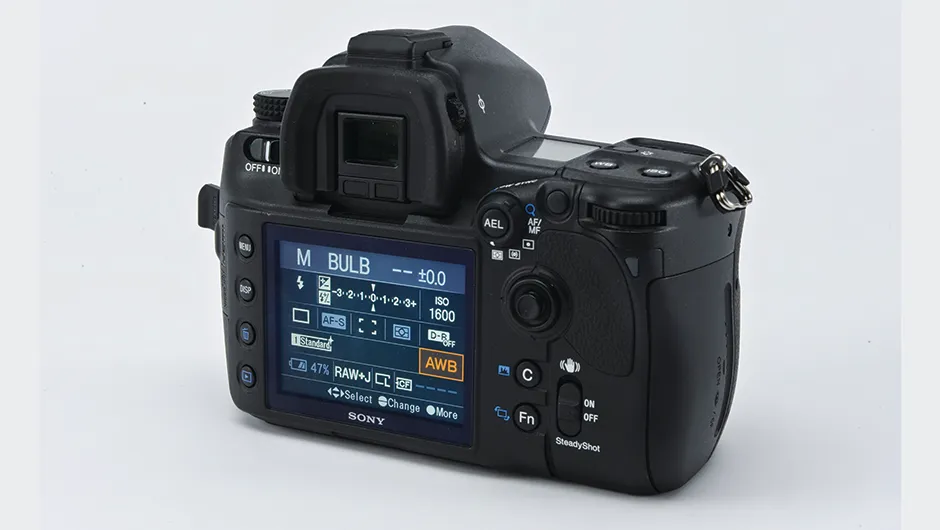At first glance, the specification list for the Sony A850 is impressive.
However, astrophotography pushes the ability of a camera to its limits and cracks in a DSLR’s functional armour can soon show up.
Unfortunately for the A850, the largest crack is a big one – it doesn’t come with Live View.
Nor does the software it comes with make it possible to take control of the camera and show its live output on your computer screen.
There is a feature called Intelligent Preview, which takes a test image and allows you to tweak exposure settings to perfection before committing to the final shot.
However, it doesn’t allow you to do any focusing – this has to be done through the camera’s viewfinder.
Noise handling during our long-exposure tests was also less impressive than the results delivered by the other two cameras, especially at high ISOs.
At ISO 6400, its top setting, there was a fair bit of noise on our California Nebula sequence, something which was echoed when we examined our 15-minute, ISO 1600 dark frame.
Our Pleiades shots showed a less than smooth, mottled sky background with a 60s, ISO 1600 shot, which was a pity as the camera did a fairly good job of recording the faint blue reflection nebula that the cluster stars are entwined in.

In addition, some of the stars in the high ISO images appeared to have what can best be described as a dark edge to them, possibly something to do with the camera’s attempt at high-ISO noise reduction.
On the plus side, the A850 is fairly red sensitive, so faint, red, emission nebulae record well.
There are two screens on the A850 – a small, backlit LCD at the top and a large bright colour screen at the rear.
The upper LCD screen can only give a small amount of information at any one time but what it does give is useful when working in the dark.
There’s a problem, though, because the rear screen insists on turning on when you change certain settings.
Press the ISO button, for example, and although you can see the current ISO setting on the small LCD screen the rear screen also activates to show you what values can be selected – destroying your eyes’ dark adaptation.
The A850, like the other models, uses Compact Flash cards for image storage.
Lens coupling is via the Minolta AF standard, and we had no difficulty in locating a T-thread adaptor for it.
Its full-frame CMOS chip also has the highest resolution of all of the models, with 24.6 million pixels at your disposal.
In conclusion, the A850 is a well-specified full-frame DSLR.
It’s a shame that, when compared to the Nikon and Canon models, it lacks some key functions for astrophotography.
